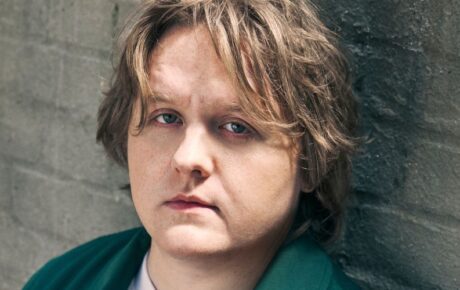If Paul McCartney had only ever written songs with John Lennon, that would have been enough. The music they created as part of The Beatles continues to cast its influence over popular music, forever cementing their songwriting partnership in history. Post-Beatles, however, McCartney has proven himself a willing participant in all manner of musical ventures, pushing himself into new territory and creating lasting works with a variety of musical conspirators. The best Paul McCartney collaborations are a testament to his constant drive to find new ways of expression, and his ability to turn his hand to almost any style of music.
Here we celebrate the best Paul McCartney collaborations of the past few decades.
Stevie Wonder
The Beatles had been Motown fans since before they were famous, and included covers of three Tamla Motown recordings on their second album, With The Beatles. (The respect was mutual: Motown stars had been covering Beatles songs almost from the group’s inception.) Paul had first met Motown’s junior star, Little Stevie Wonder, in a London nightclub in 1966, and tapes exist of Paul and Stevie, among others, jamming with John Lennon in the US in 1974.
It wasn’t until 1982, however, that Paul and Stevie first collaborated officially. “I originally rang Stevie up,” Paul recalled. “I had written the song “Ebony And Ivory.” It’s about black people and white people living in harmony. I admired him so much and he said ‘Yes’.”
The recording was produced by Beatles producer George Martin, who found the session “a tremendous privilege because they are each multi-talented instrumentalists”.
The resultant song closed Paul’s 1982 album Tug Of War. When it was released as a single, it would become Paul’s first UK No.1 since “Mull Of Kintyre” in 1977, as well as topping the US Billboard charts for a remarkable seven weeks – his longest run at the top since The Beatles’ McCartney-penned “Hey Jude.”
But “Ebony And Ivory” wasn’t the only song the pair cut together. “What’s That You’re Doing?,” which also appeared on Tug Of War, has, in more recent years, become a DJ favorite after Paul revisited it with Freelance Hellraiser on the pair’s 2005 Twin Freaks album.
Carl Perkins
It’s fair to say that all The Beatles loved Carl Perkins. The rockabilly giant reportedly visited EMI’s studios on Abbey Road when The Beatles recorded their version of his song “Matchbox” in June 1964 – one of a number Perkins songs covered by the group during their early years.
Fast-forward 17 years, and during the recording of his Tug Of War album in the Caribbean, Paul invited Perkins to join him at George Martin’s Air Studio on Montserrat. “I wanted to play with Carl Perkins,” Paul recalled. “I have loved him since I was a boy. His songs were the first blues I ever listened to. “Blue Suede Shoes,” for example. We didn’t cast him in a track, I just rang him up and asked if he fancied getting involved. He said, ‘Why, Paul, I sure do,’ and he came down to Montserrat. He came down on his own, no entourage. He just turned up off the plane. He came down late at night.
“We were in the studio and he came down and said, ‘My, it’s real pretty round here, Paul.’ He went to bed, got up the next morning and he obviously hadn’t seen the island. So he came back later that day and said, ‘Paul, believe me. This morning, I thought I’d died and gone to heaven when I woke up. It’s so pretty here and so beautiful.’ So while he was there, I wrote the track ‘Get It’. We had a bit of fun recording it. I can always see Laurel And Hardy dancing to this track.”
As a “thank you” to Paul and Linda McCartney for their hospitality during his stay, Perkins wrote a song called “My Old Friend.” But when Carl played it for the couple, Paul suddenly got up and walked out, visibly shaken. Linda gave Carl a reassuring hug, and explained to him that during Paul’s last conversation with John Lennon, who had been murdered mere months earlier, John had said to him “Think of me every now and then, my old friend,” words echoed in the song by Perkins.
Michael Jackson
The association between Paul and Michael Jackson first surfaced when the latter covered “Girlfriend” from Wings’ London Town album, including it on his groundbreaking Off The Wall record in 1979. In 1981, the pair began working together on “Say Say Say.”
“Michael rang up and said he wanted to work together,” Paul explained to Mojo’s Paul Du Noyer. “I said, ‘What do you mean?’ He said, ‘I want to make some hits, you know?’ I said ‘Sounds good.’ So he came over.
“We sat around upstairs in my office in London, I grabbed a guitar and “Say Say Say” came out of that. He helped with a lot of the words. It’s not a very wordy song but it was fun working with him because he’s enthusiastic… at that stage with Michael you weren’t even talking about a writer, more just a vocalist and a dancer. But he said, ‘Let’s make a couple of hits,’ and that’s exactly what we did.”
It would take a further two years before the pair completed the song. During that time, they also recorded two more numbers – “The Man,” which, like “Say Say Say,” was co-written by the pair and appeared on Paul’s 1983 Pipes Of Peace album, and “The Girl Is Mine,” which appeared on Jackson’s 1984 Thriller smash. “The Girl Is Mine” would be the first hit to feature Paul that he’d neither written nor produced since “Something” in 1969.
Eric Stewart
The 10cc multi-instrumentalist ran a couple of studios, including Strawberry South, in Dorking, Surrey, not far from Paul’s home and studio. Paul invited Eric Stewart along to sessions for his Tug Of War album – “Bring your acoustic round and we’ll have a plonk” – beginning in 1981, and the pair worked together in various incarnations for the next five years. Stewart acted as an instrumentalist and singer, before becoming a songwriting partner, foil, and producer, appearing alongside Paul on the credits for the Tug Of War, Pipes Of Peace and Press To Play albums.
Paul later talked of the relationship philosophically, confessing how he missed having a partner like John Lennon to work with: “I did miss a collaborator. Even if you’ve written a thing on your own, it’s handy to take it along to someone… They only have to tell you it’s great sometimes, that’s all the collaboration you need, otherwise, you’re still wondering. It’s always good to have that second opinion.”
More than half of the tracks on Press To Play are credited to Paul McCartney and Eric Stewart, including the singles “Stranglehold,” “Pretty Little Head” and “Only Love Remains.”
Elvis Costello
When Paul decided to hook up with a new songwriting partner towards the end of the 80s, he went for Elvis Costello, and was struck by the many similarities to working with John Lennon – the pair sat across from each other with acoustic guitars, a piano, a notebook, and his partner in thick, horn-rimmed glasses with “a great sarcastic quality in his voice”. As Paul explained, “I would sing a line and [Elvis] would come up with some witty, acerbic foil to it. I said, ‘My God, that was my and John’s whole style.’ I’d write some romantic line and John would write the acid put-down.”
From Costello’s perspective, it was difficult not to be overawed, at least at first: “Inevitably, there was a bit of, ‘F__king hell, it’s Paul McCartney.’ He’s written loads of famous songs… He’s very practical about songwriting – very formal, funnily enough.”
The results were a success, with 1989’s Flowers In The Dirt proving a commercial and critical success – so much so that it inspired Paul to go out on tour for the first time in a decade.
Youth
One of Paul’s less-obvious (and, indeed, less well-known) collaborations is with the musician and producer Youth. Born Martin Glover, Youth first found prominence as bass player with post-punk band Killing Joke, but it was his dance music that attracted Paul, who invited Youth to remix tracks from his Off The Ground album in 1993. The partnership first bore fruit with that year’s Strawberries Oceans Ships Forest album, released under the name The Fireman, with neither Paul’s nor Youth’s name to be found on the sleeve. Two further albums have so far materialized, one in 1998 and another ten years later.
As Youth recalled, “One day he had to go off somewhere with Linda, so he left me alone working at the Mill [Paul’s studio in Surrey]. When their helicopter came back, it was very late, they’d had a few glasses of champagne and their kids were with them. Paul said to me, ‘Do you mind if we stick around and watch?’ as if it wasn’t his studio I was using. They all stayed, dancing around to the music until the sun came up.”
The second Fireman album, Rushes, was one of the final projects Paul recorded before Linda McCartney’s death, in April 1998, at the age of just 56. As Youth explained, “We recorded the album when Linda was going through the final stages of her cancer. She was very involved with the project again. It was very sad when she died. When I listen to the album now, it sounds like a requiem for her, it’s very beautiful.”
Nigel Godrich
It was George Martin who recommended that Paul work with Nigel Godrich, with the latter’s productions for Beck and Radiohead making him the critics’ choice, too. Godrich produced Paul’s 2005 album, Chaos And Creation In The Backyard, probably Paul’s most critically-acclaimed record of the 21st Century.
But it wasn’t all plain sailing, with Paul later talking about how Godrich had sought to take him out of his comfort zone. Godrich explained that he approached the sessions with some trepidation: “My initial reaction was one of terror, not only because it’s a very important person, but I really wasn’t sure how willing he would be to get his hands dirty.”
Paul picks up the story: “There were some tense moments making the album. Nigel wasn’t sycophantic; he said from the off, ‘I warn you, I know what I like.’ There was some heated discussion. There’s a song called ‘Riding To Vanity Fair’ where we got down to ‘I like it!’, ‘I don’t like it!’, ‘Well I like it!’ But then I realized there’s no point in charging him down like that; I should listen. We actually moved on to why he didn’t like it – ‘The first line’s good, but after that…’ ‘Oh, how about this then?’”
But in the end, the approach worked, with Godrich explaining: “The third session, he came back and played me a song, and I was like, ‘F__king hell, that’s so much better.’ That was “At The Mercy.” He said, ‘I think I’m remembering how to do this!’ Maybe he was expressing the concept of having to better what he’s doing because someone was going to look at him and say, ‘Not sure,’ rather than just blindly taking everything that he proffers.”
Greg Kurstin
Having found fame producing the likes of Adele, Pink, and Lily Allen, Greg Kurstin would be forgiven for thinking he had all the answers when it comes to hit-making. And yet when he began recording an album with Paul McCartney, he couldn’t help but wonder what he had that the septuagenarian needed: “He can do everything himself if he wants to. He’s an amazing guitarist, an amazing drummer, and he knows his own mind. But I do think he likes to have someone to bounce ideas off of.”
The pair first worked together in early 2015. “We did a session together for this film,” Kurstin told Rolling Stone magazine. “I’m still not sure if it’s happening or not, but we spent one day live in the studio with a full band, a brass section, background singers and everything for this song that Paul had written for an animated film. I don’t know what the status of it is, but I think it was a trial for Paul and me. I think he wanted to see what it was like working with me. That was the first time.” The following year, 24 months of sessions got underway for what would become Paul’s acclaimed Egypt Station album.
But even for such a well-respected hitmaker as Kurstin, it can be nerve-wracking to make suggestions on improving a Paul McCartney song. When asked if there were any difficult moments in the studio, he explained, “I can’t remember specifically, but I remember him just sort of carrying on, and I’m wondering, ‘Did he hear me?’ Then maybe half an hour would go by and I’d say, ‘Hey, Paul, what about that idea I mentioned a little while ago?’ He said, ‘Oh, I heard you. I was just pretending to ignore you.’ We’d just laugh about it. Then sometimes two days later he’d try the idea, and I’d be like, ‘Wow, OK.’ I thought I failed miserably with the idea, but he came back to it and really tried. I think he’s always listening, always absorbing.”
Ryan Tedder
The only song on 2018’s acclaimed Egypt Station album not produced by Greg Kurstin saw Paul join forces with Ryan Tedder. The American multi-instrumentalist, writer and producer, who has made hits with everyone from Beyoncé to Ed Sheeran, was fresh from Grammy-winning recordings with Taylor Swift and Adele when he was asked if he fancied trying his hand with the former Beatle. As Paul told Mojo magazine, “On the phone before we got in the studio, Ryan said to me, ‘What do you want to achieve from this week?’ And I could be coy and say, ‘I don’t know…’ but no, I cut to the chase. I said: ‘A hit!’ He said, ‘Great, you’re talking my language. The world loves a hit!’
The resulting single, “Fuh You,” garnered attention not just for its catchy commercial appeal, but also for the suggestive title and lyrics. When asked about this, Paul admitted to a certain amount of mischief: “Yeah, well, I mean, you know, if you’re in a studio, you’re there, you’re working, but it’s music, so it’s a bit of fun and we like to not take it too seriously, so you develop a little camaraderie where you’re having a joke. So on that song we were making it up and I went out and sang that and we knew it would be misconstrued, but we were quite glad to put it in. When you read the lyrics it’s perfectly straight, but my daughter, when she heard it, she walked into the room, she said, ‘Did I just hear what I heard?’ I said, ‘l don’t know.’ But yeah, good to have a bit of fun, you know?”
Linda McCartney
The one person with whom Paul collaborated for longer than anyone else – John Lennon included – was his first wife, Linda. After The Beatles split, Linda encouraged her dejected husband to record his eponymous debut solo album. But for his second post-Beatles outing, Paul turned to his wife not just for inspiration but as a musical partner. Having helped her learn keyboards, 1971’s Ram was credited to Paul And Linda McCartney. Following Ram, the pair recruited former Moody Blue Denny Lane and drummer Denny Seiwell to form Wings. The two McCartneys, plus Lane, were the only constants in an ever-changing line-up that would produce seven studio albums and perform five concert tours – including a mammoth world tour from August 1975 to October 1976, playing to over half a million people in North America alone.
Of all that she brought to their musical partnership, it’s probably her harmonies with Paul that had the greatest appeal. As Paul recounted, “When I worked with Michael Jackson, he said, ‘How’d you do those harmonies, man?’ I said ‘Well, it’s me and Linda.’” Michael then invited Linda to join them on their recording together.
While Linda generally preferred to stick to keyboards and backing vocals, she did enjoy the occasional foray into the spotlight, such as on the 1977 reggae-inspired single “Seaside Woman” – her first sole songwriting credit. Linda continued to play with her husband throughout the 80s and into the 90s – including 103 shows of the Paul McCartney World Tour from 1989-90.
In 1998, her life was cut tragically short by cancer at the age of 56. Six months after her death, a posthumous collection of her recordings was issued under the name Wide Prairie. The album compiles recordings Linda made throughout her career, and includes a number of songs she composed alone or with Paul, as well as other collaborators, and a scattering of covers.
Article originally published on uDiscoverMusic.com.
SEE ALSO: Best Paul McCartney Songs: 20 Essential Post-Beatles Macca Tracks












